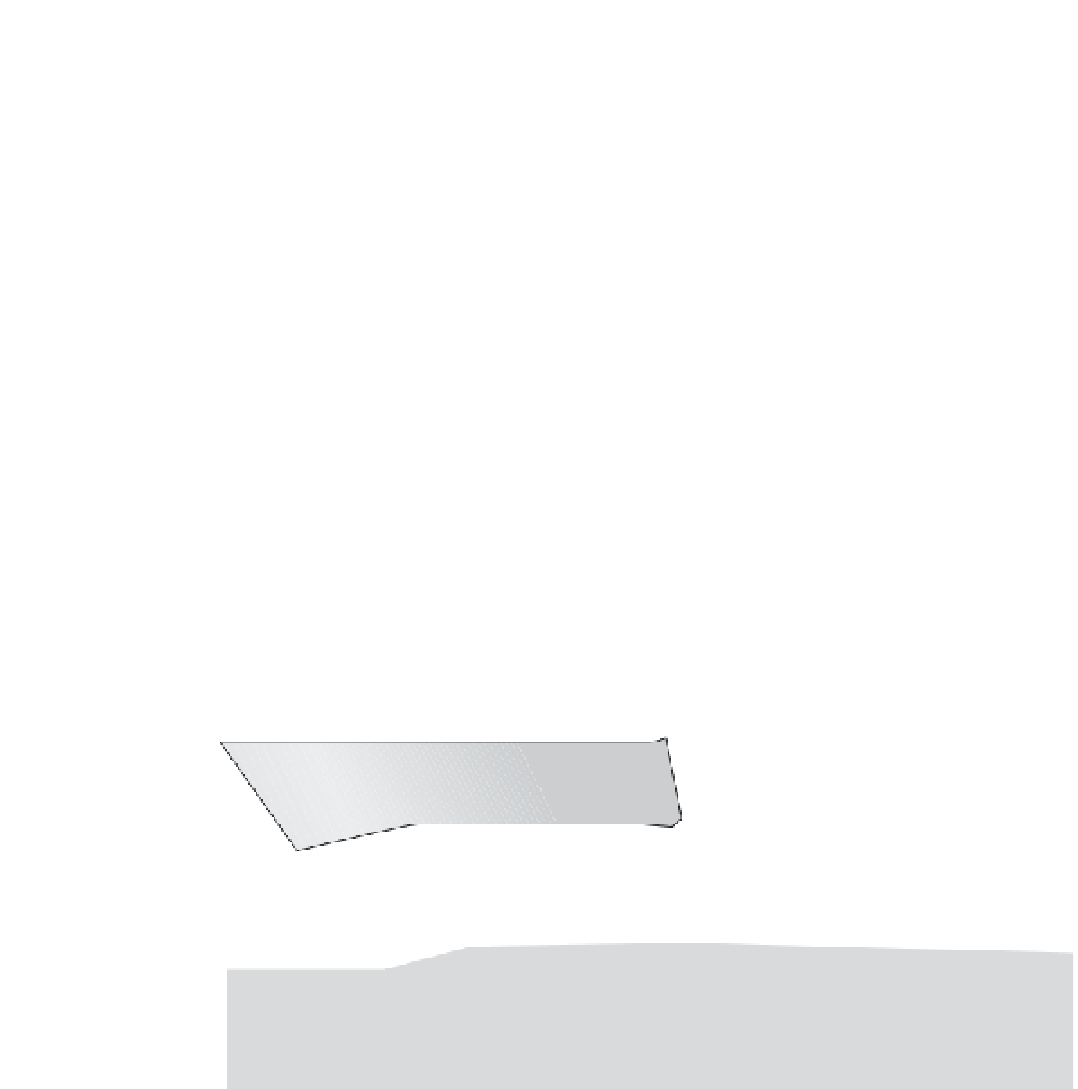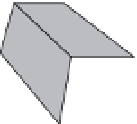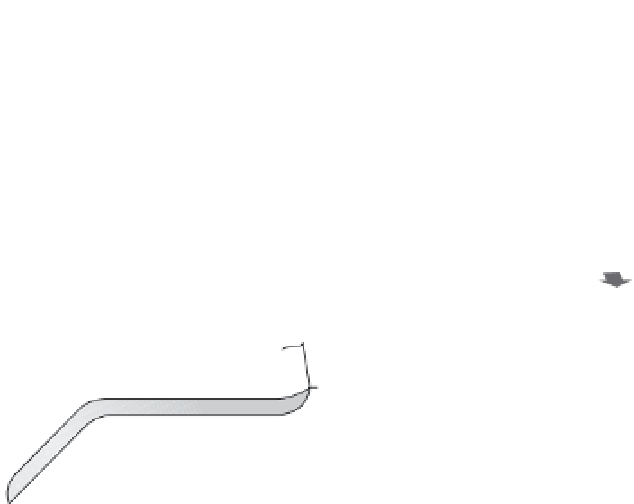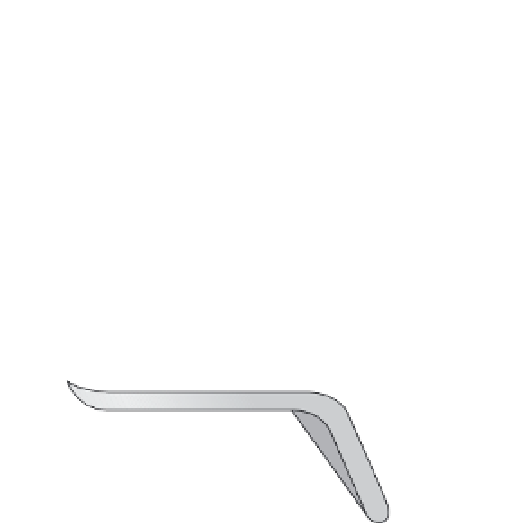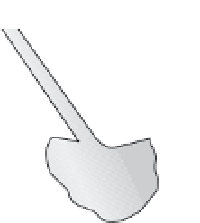Geoscience Reference
In-Depth Information
TRANSFORM FAULT
RESISTANCE
COLLISION
BUCKLING
FAULTING
SHEARING
CRACKS
TEARING
BENDING
FOLDING
DRAG
MATTER
ENERGY
ENTROPY
few of the
16 possible kinds of triple
junctions are stable
. Nevertheless, there
seems to be a pattern in the plate mosaic and
there are similarities with so-called minimal sur-
faces. From strictly static and geometric consid-
erations the ideal (Platonic) world may consist of
12 tiles with five NN and five NNN coordinations.
The real dynamic world contains a hint of this
ideal structure. A regular pentagonal dodecahe-
dron with rigid faces would be a jammed struc-
ture (Plato argued that true knowledge was for-
ever fixed in the ideal realm of Platonic forms).
Fewer, or more, plates, deformable plates and a
bimodal distribution may be required to mobilize
the surface mosaic. Vibrations (earthquakes) tem-
porarily mobilize sections of plate boundaries.
Fig. 4.8
Much of the energy and (negative) buoyancy
associated with plate tectonics and mantle convection occurs
in the surface layer. The mantle provides energy and matter
but the plates and slabs organize and dissipate this.
Far-from-equilibrium self-organized systems (SOFFE) require
an outside source of energy and matter but their structure
and dynamics is self-controlled.
Dynamics
How might the forces acting on the surface of
a planet tend to subdivide it? The forces involve
thermal contraction,
slab pull, ridge push,
tearing (changes in dips of bounding slabs),
stretching (changes in strike of boundaries), buck-
ing, flexure, convection, jamming, force chains
and so on (Figure 4.8). In far-from-equilibrium
systems the minimizing principle, if any, is not
always evident. The first step in developing a the-
ory is recognition of any patterns and identifica-
tion of the rules. To date, most of the empha-
sis on developing a theory for plate tectonics
has involved thermal convection in ideal fluids
driven from within and below.
If plates drive and
organize themselves, and organize mantle convection, or
if plates are semi-rigid and can jam, then a different
strategy is needed
.
The definition of a plate and a plate bound-
ary is subjective. Things are constantly changing.
It is improbable that there is a steady-state or
equilibrium configuration of plates since only a
Far-from-equilibrium self-organized
systems
In
complexity theory
, a system with multiple
interactions and feedbacks can spontaneously
organize itself into a whole series of complex
structures, in apparent contradiction with the
second law of thermodynamics. A
far-from-
equilibrium system
can act as a whole, just as
does a flock of birds, in spite of the short-
range character of the interactions. Plate tec-
tonics can be considered as a non-equilibrium
process in the sense that a small perturbation
in the system can cause a complete reorgani-
zation in the configuration and sizes of plates






